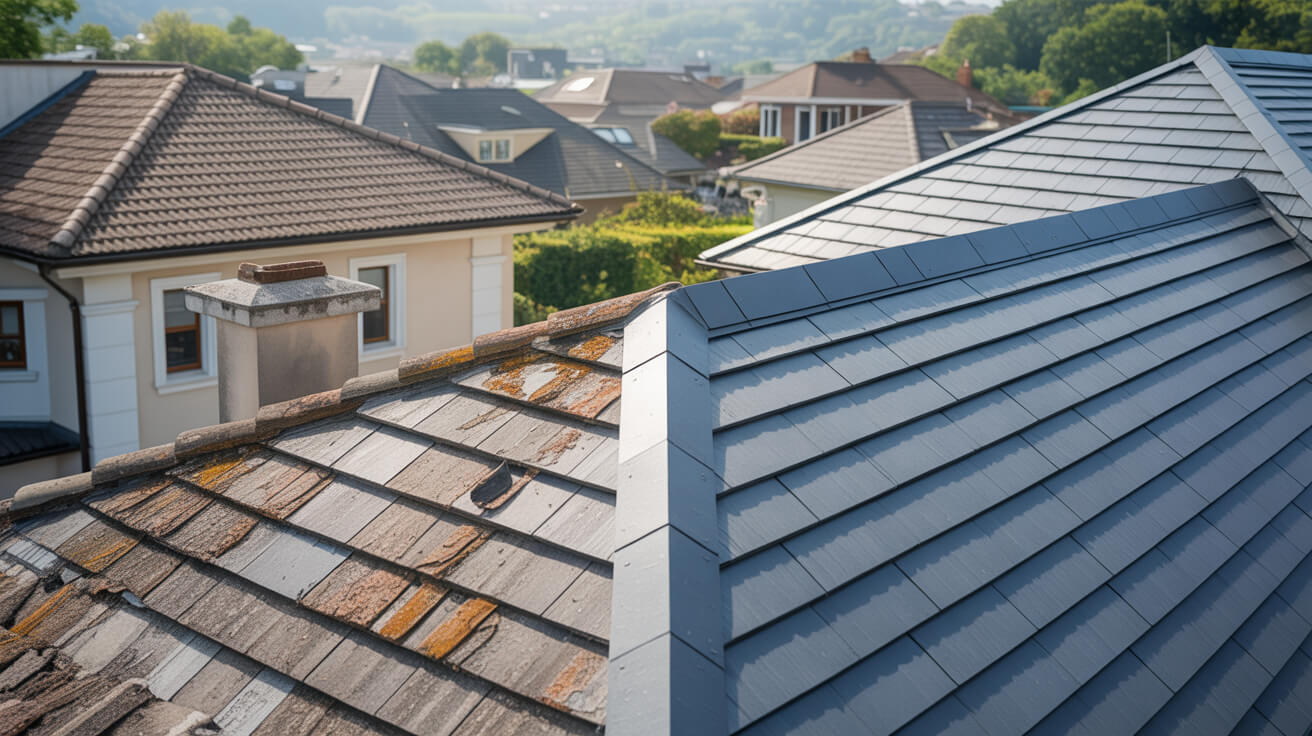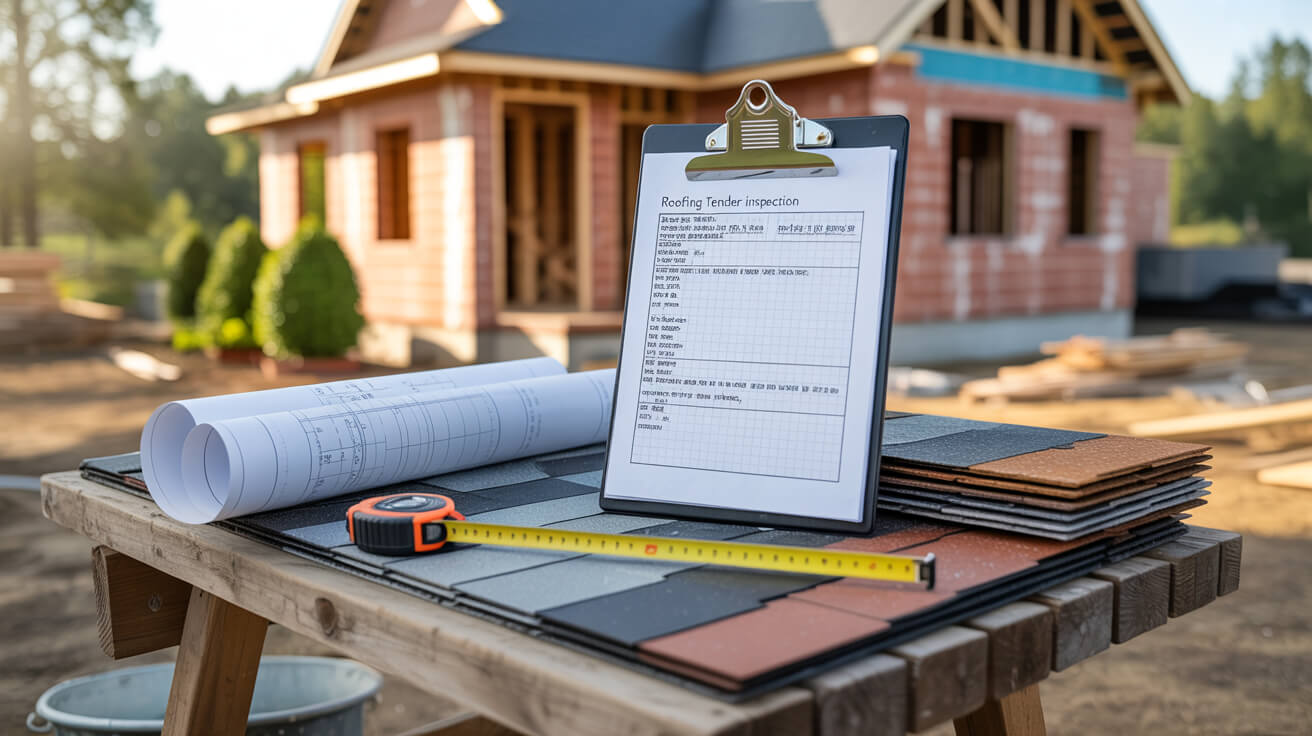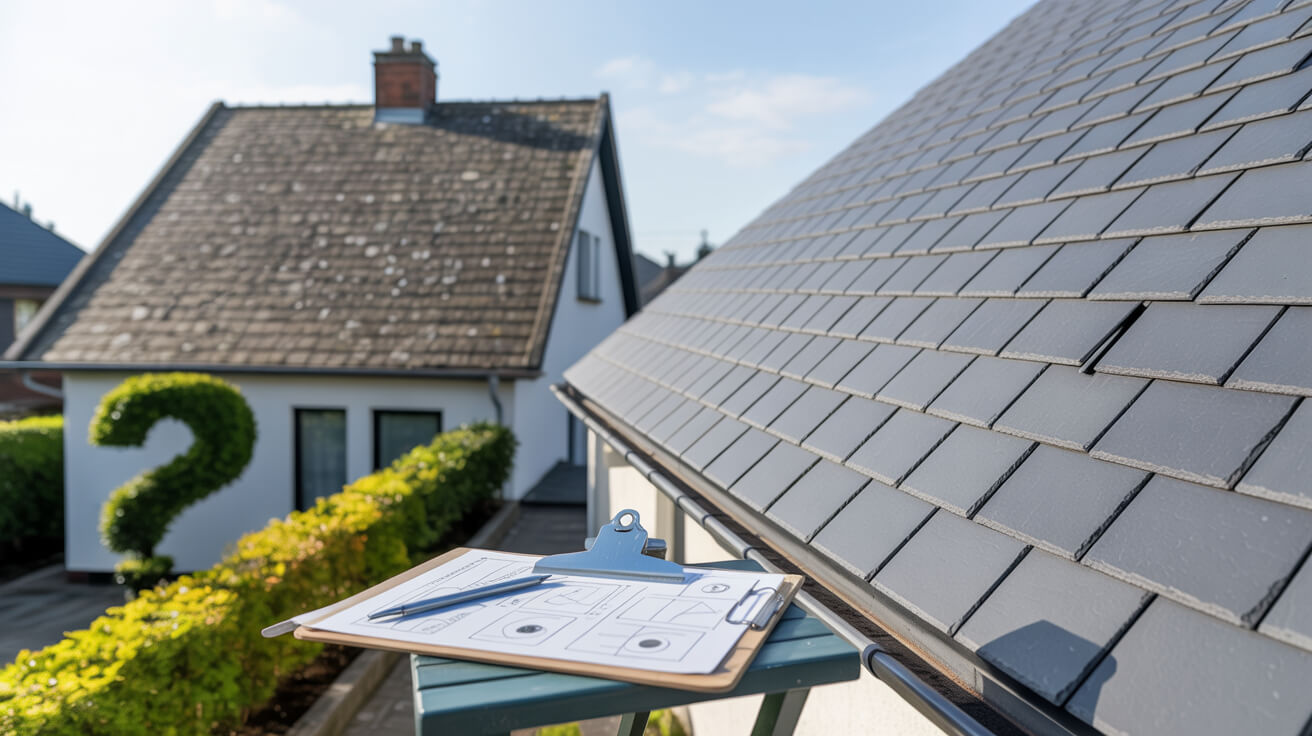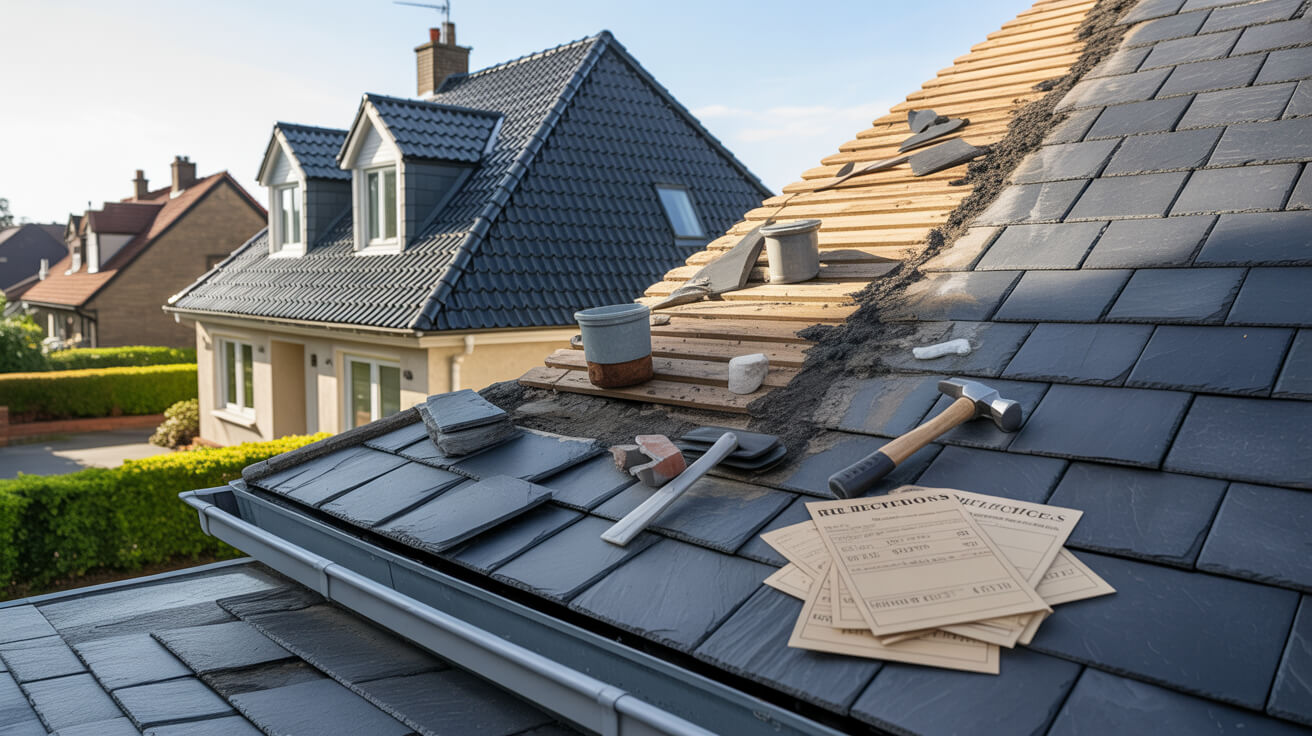 The Complete Guide to Roofing Systems for UK Properties
The Complete Guide to Roofing Systems for UK Properties
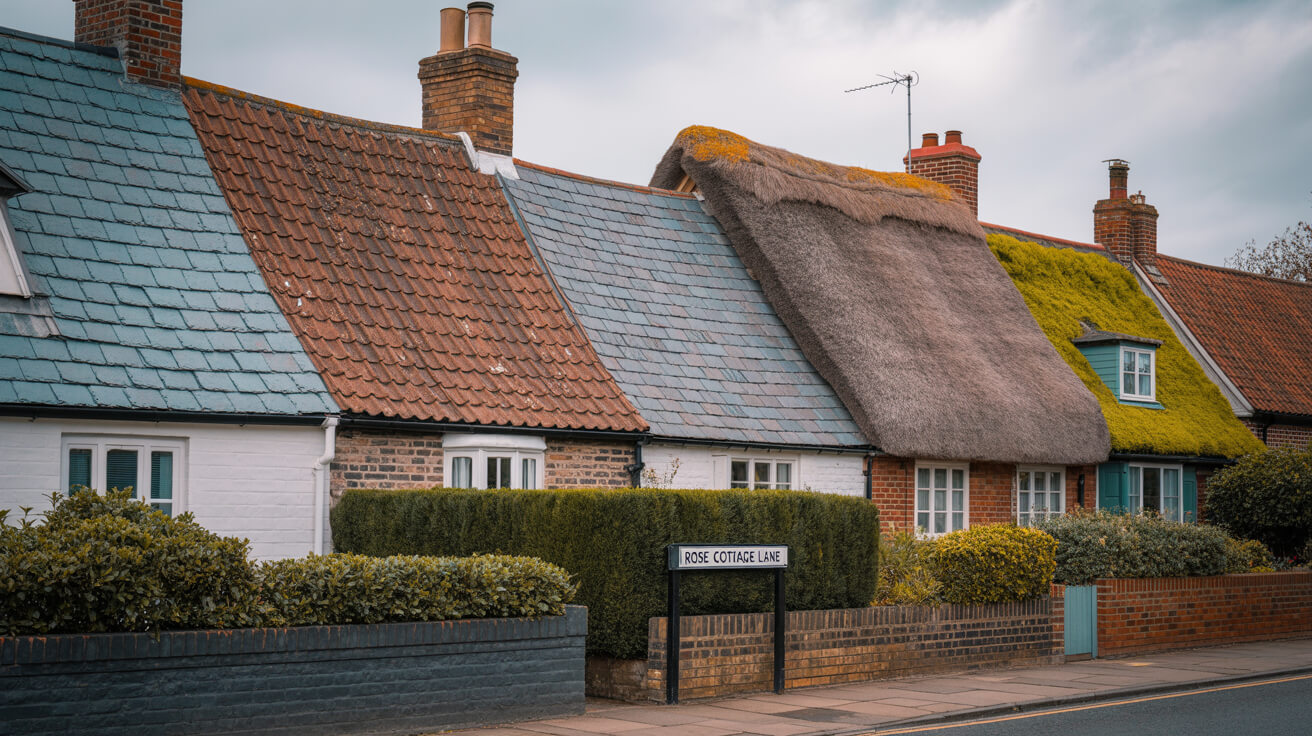
Roofing is not a passive shield; it’s the active first line preserving every asset within your property. In the UK, your choice of system defines not only how well your home or business weathers the storm, but how long your investment thrives when measured against regulations, insurance scrutiny, and market expectation. Every roof exposes vulnerabilities if design, material, or workmanship fall short—a fleeting leak spirals into costly structural decay, or a shortcut on compliance invalidates a warranty when you need it most.
Whether you’re responsible for a heritage estate in Sussex, a portfolio of letting properties in London, or your family’s own semi-detached, one truth resets everything: only mastery over the layers, laws, and lifespans of UK roofing systems delivers peace-of-mind and measurable financial confidence. That’s why reputable specialists like JG Leadwork and Roofing are sought after—not for the jobs anyone can see, but for the ones that never cause you trouble in the first place. Knowledge, not hope, keeps the rain out.
Major Roofing System Categories: Decisions That Define Property Outcomes
Examining the landscape for UK properties unveils four dominant classes of roofing systems, each calibrated for distinct performance, regulatory, and aesthetic aspirations.
Pitched Roofing Systems
Traditional, visually commanding, and structurally resilient, pitched roofs are what most homeowners envision when thinking “roof.” Classic clay tiles and Welsh slate signal lasting value, while advanced underlays deliver insulation against persistent British damp. The science matters: battens, eaves, ventilation all must work in harmony to defeat wind uplift, condensation, and thermal loss. The difference between a tile laid by code and one by guesswork? Sometimes, twenty years of life or a single freeze-thaw disaster.
Common Materials:
- Clay tiles (machine-made, handmade)
- Concrete tiles (profiled and plain)
- Slate (Welsh, Spanish, fiber-cement)
- Thatch (rare, heritage)
- Metal sheets (galvanised, zinc, copper, lead)
Flat Roofing Systems
Critical for modern expansions, commercial footprints, and cost-conscious refurbishments, flat roofing has evolved beyond its “leak-prone” past. Now, EPDM, GRP, and TPO membranes offer seamless performance with impressive warranties—when the install sequence is observed to the letter. Fail to respect slope design, edge detailing, or insulation phasing? The weakest link makes the whole system a liability.
Core Flat Roof Materials:
- EPDM Rubber
- GRP / Fibreglass
- TPO and PVC single-ply
- Torch-on felt (bitumen-based)
- Mastic asphalt (heritage, balcony, complex layouts)
Heritage & Leadwork Roofing
On listed or period buildings, roofing ceases to be generic; every detail, from lead code to lime mortar mix, passes under regulatory and insurance scrutiny. Consent can turn on a misplaced tile, and a poorly executed lead-weld can erase centuries of value. Here, craftsmanship, documentation, and heritage alignment are non-negotiable. JG Leadwork and Roofing’s in-house methods keep buildings approved, insurable, and beautiful—key for owners and conservation-minded professionals.
Typical Heritage Features:
- Code 5/6 lead sheet for valleys/flashing
- Handmade clay or stone tiles, slate
- Traditional timber framing
- Lime mortar pointing, not cement
- Historic detailing, architectural integration
Commercial Roofing Systems
In logistics hubs, office blocks, and mixed-use developments, roofing is a large-scale, compliance-shaped challenge. Life cycle cost, warranty, and rapid installation at scale matter as much as storm resistance or energy profile. Durable membranes, high-performance insulation, and integrated drainage turn upfront outlay into multi-year asset protection. Compliance overheads—Part L, NHBC, insurance reporting—are ferro-concrete realities for every project manager and facilities director. Routine maintenance, not crisis repair, is the path to ROI.

Pitched Roofing: The Science Beneath Traditional Aesthetics
Pitched roofs remain the yardstick for British property resilience—a design as functional as it is visual. Yet, behind every admired silhouette is a meticulously engineered system where every decision exposes you to either possibility or risk.
What Makes a Pitched Roof Superior?
Material selection impacts performance for decades, not just through durability metrics like freeze-thaw cycles or UV resistance, but in how they complement insulation strategies and ventilate moisture. Welsh slate can outlast generations, concrete tile excels in cost and modular maintenance; advanced underlays create pockets of protection against both wind-lift and damp ingress.
Installation sequence matters:
- Eaves and ridge ventilation prevent condensation build-up.
- Batten spacing aligns with tile type and local wind zone.
- Fixings and clips (BS5534 compliant) are chosen to withstand high winds, minimizing uplift failures and rogue leaks.
- Mortar bedding—replaced with dry fix systems—reduces future maintenance (and post-storm callouts).
Poor installation or misaligned materials start chains of decay only detected when ceilings brown, or tiles slip in a winter squall. The most significant risks are quiet: unseen rot in underlays, damp behind insulation, a missing clip setting up the first wind-driven loss. Mastery is achieved not in appearance, but in how every component locks into the next, closing out unforced errors.
For property owners, clarity comes from transparency in specification, documented compliance, and a contractor willing to show, not just sell solutions.
Curious whether your pitched roof’s lifespan is being undercut by minor details? Book a diagnostic walkover with JG Leadwork and Roofing for a data-backed risk assessment.
Flat Roofing: Modern Materials, Future-Proof Performance
Flat roofs have earned their way into the UK landscape, moving from reputation for failure to benchmarks for energy efficiency, rapid install, and architectural possibility.
Why Do Flat Roofs Fail—or Last?
It’s not the “flatness,” but the system integrity. Slope design dictates drainage speed; drainage speed dictates whether membrane seams ever pool and prematurely fail. Single-ply membranes like EPDM or TPO, when installed by certified hands, can exceed two decades of near-maintenance-free service. High-quality insulation, securely bonded and sealed, preserves building energy profiles. But shortcutting a 1:40 fall, skipping compatible adhesives, or mismatching upstand details sets up silent water ingress—damage nobody sees until it’s spread.
Visual detailing—the difference between a joint that flexes with building movement or splits under thermal expansion—sets apart a reference installation from a future insurance headache.
Owners, architects, and facilities managers should demand system-level proofs:
- Installation sequence diagrams
- Compatible material certificates
- Post-install thermal imaging to verify seal integrity
- Maintenance protocols (bi-annual checks, autumn/spring debris clearance)
- Warranty conditions stated in plain terms, with clear exclusions revealed
Want proof your flat roof is built for the coming climate, not just current code? Request a system-level report and leak risk profile from JG Leadwork and Roofing.

Heritage & Leadwork Roofing: Where Tradition Meets Compliance
When a building bears legal or historic designation, roofing stops being modular and becomes bespoke. Each intervention, from gutter to ridge-line, is a negotiation between character preservation, material integrity, and non-negotiable legal protocols.
Restoring Value Without Inviting Risk
True heritage repair uses original methods—hand-formed lead (Code 5 or 6 matches span to flexibility), lime mortar (breathes, prevents hidden damp), slating patterns handed down over centuries. Every task, from flashing weld to tile bonding, stands scrutiny not only from building inspectors and conservation officers, but future insurers and estate agents. A lead valley formed without correct expansion allowance, or a pointing job finished with cement rather than lime, can undermine entire restoration grants or result in double-damage during freeze cycles.
The cost of misstep is measured in both failed consent and undermined resale value. Secure long-term compliance by retaining documentation: pre- and post-works photographs, materials specifications, job logs, and if possible, before-and-after moisture and movement readings.
Working on a listed property or period home? JG Leadwork and Roofing’s documented heritage protocol doesn’t just get jobs done; it preserves value you can prove for generations.
Begin the right restoration—request a technical survey and method statement tailored to your building’s obligations.
Commercial Roofing: Scale, Proof, and the Price of Compliance
Commercial roofing is less about aesthetics and more about value protection, compliance volume, and operational continuity. On a warehouse or retail unit, a roof is an asset class, not just an envelope.
Navigating Complexity, Minimizing Downtime
Material choices for commercial systems prioritize large-span coverage, rapid installation, and tested performance. Bitumen-based felt offers competitive cost per m² for refurbishment; TPO/PVC membranes deliver durability and minimal energy transfer, reducing HVAC demand and operational cost. Standing seam metal roofs pitch unrivalled structural longevity—but demand precise thermal expansion joints and accredited installation crews.
But the deeper value lies in proactive compliance:
- Fire resistance (Part B, insurance-mandated, critical for public buildings)
- Lifecycle cost rationale—documented returns from scheduled maintenance vs. reactive repair
- Integrated maintenance pathways (access walkways, edge protection, scheduled inspections)
A commercial install plan from a compliant provider—one compulsively documenting every step—means your roof supports insurance claims, retains warranty validity, and can be leveraged as a value-adding asset at resale or refinancing.
Mitigate operational risk. Secure a compliance-backed audit or quote for your next roofing asset cycle from JG Leadwork and Roofing.

Regulations, Materials, and Performance: The Real Cost of Getting it Right
Regulatory complexity, not just storm or time, is the silent risk to UK roofing health. Miss a detail—wrong insulation u-value, incorrect fixing for the local wind zone, or undocumented lead code—and the cost can run from nullified warranties to legal challenge.
Stricter Codes, Measurable Outcomes
Current standards demand roofs do more than just “keep out the weather”: Part L governs energy performance; BS5534 sets fixing and wind load protocols for slating and tiling; listed building consent dictates even the mortar mix. Material selection must be justified by region and exposure; insulation, by both thermal performance and condensation resistance.
Too often, works fail because an installer (or property owner) assumed “like-for-like” replaced would suffice. True risk reduction happens when every project step—from underlay spec to fixing interval—is mapped back to the latest standards and rigorously documented. A report, not an invoice, is your best safeguard.
Planning major works? JG Leadwork and Roofing’s compliance audit exposes risk before cost escalates—protecting asset, reputation, and peace of mind.
Ready for a Roof That Works for the Long Term?
You’ve seen every layer—from material science and regulatory labyrinths to the pressure points where heritage, commercial scale, and asset value collide. Now is when action turns insight into protection and profit.
If you want a roof defined by clarity—not calls to repair, but calls confirming value—JG Leadwork and Roofing is ready. Book your technical survey, compliance report, or restoration plan now. Own your roof’s future.
Frequently Asked Questions
What Are the Essential Elements That Make Up a Reliable Roofing System in the UK?
The Anatomy of a British Roofing System: Function, Value, and Longevity
A high-functioning roofing system is the sum of deeply interdependent layers, each engineered to shield your property from the UK’s relentless rain, gales, and seasonal transitions. At its core, your roof merges structure, insulation, waterproof layer, ventilation, and drainage, forming a physical and financial barrier against deterioration.
A sound British roof isn’t a collection of generic products stacked on rafters. It’s a meticulously assembled structure:
- Structural Base: Rafters, trusses, or decking tailored for the property’s span and pitch
- Underlay & Vapour Control: Modern membranes, such as breather felts or vapour retarders, preserve your attic and insulation from unseen damp
- Primary Waterproof Layer: Whether tile, slate, EPDM, or lead, this layer is the public face and active shield
- Fixings and Flashings: Stainless steel, copper, or lead lock tiles and membranes against wind uplift and water ingress—often overlooked, but fundamental
- Insulation: High-performance insulation prevents silent energy leaks; proper sequencing conquers both condensation and cold bridging
- Ventilation: Ridge, soffit, and tile vents ensure a dry, mould-free interior, sustaining material lifespan and indoor air quality
- Drainage and Rainwater Goods: Gutters, valleys, and downpipes engineered for your roof’s area, ensuring rapid, consistent water evacuation even in torrential rain
Modern British building standards (e.g., BS5534) demand systemic integration—each element chosen for local weather, orientation, and use-case, registered for compliance, and documented for future sale or insurance claims. Where corners are cut, risk is planted: internal rot, heat loss, insurance disputes, and ultimately property value loss.
A reputable installer like JG Leadwork and Roofing delivers not just assemblies, but lifetime systems, mapping every decision to your property’s realities—be it a Victorian terrace, a coastal bungalow, or a commercial redevelopment.
Every roof is a calculated defence. Audits reveal vulnerabilities invisible to the naked eye—giving you a chance to act before failure strikes.
What Are the Key Categories of UK Roofing Systems—And Why Does Picking the Right One Matter?
Matching Roofing Categories to Performance, Aesthetics, and Risk
Each UK roofing system is a strategic answer to a web of climate, compliance, and architectural demands. Choosing without insight is an invitation to costly regret, whereas aligning your system to your needs locks down insurance, resale value, and lasting comfort.
- Pitched Roofing
- Steep slopes, often >20°, building natural resilience against rainfall and snow
- Materials: clay/concrete tile, natural slate, metal sheets, sometimes thatch
- Excellent drainage and longevity; frequent choice for residential and historic buildings
- Flat Roofing
- Nearly level, minimum 1:40 fall, exploiting membrane technology for watertightness
- Materials: EPDM, TPO, GRP, torch-on felt, liquid systems
- Favoured for extensions, commercial, and urban infill due to fast build and accessible footprint
- Heritage and Leadwork Roofing
- Reserved for period and listed properties governed by conservation law
- Materials: lead (Code 5/6), handmade clay tile, Welsh slate, lime mortar
- Demands precise compliance and documentation for planning permission, funding, and insurance
- Commercial Roofing Systems
- Prioritises area coverage, performance warranties, and maintenance scheduling
- Materials: built-up felt, PVC, TPO, standing-seam metal, insulative panels
- Compliance heavy: fire ratings (Part B), NHBC compliance, manufacturer-backed long-term guarantees
The impact of your choice:
- Insurance premiums are directly shaped by match to standards and correct system use
- Maintenance costs over decades are steered by core design, not just initial outlay
- Heritage value can be destroyed or preserved on the basis of one layer, flashing, or fix
| Category | Best For | Main Risk if Mismatched |
|---|---|---|
| Pitched | Homes, heritage | Leak, tile failure |
| Flat | Extensions, offices | Ponding, rapid decay |
| Heritage | Period buildings | Legal, consent issues |
| Commercial | Scale builds | Warranty void, costs |
A single site assessment reveals not just your viable options, but the lifetime stakes at play. JG Leadwork and Roofing provides clarity that cuts years of expensive learning.
Smart system selection is where property value and peace of mind begin.
How Do Materials and Installation Techniques in Pitched Roofing Shape Long-Term Value?
Building Endurance: The Science of High-Performance Pitched Roofs
The most impressive roof is rarely the one with the newest shine, but the one that shrugs off storms and seasons without complaint for decades. The secret? Deep precision in both materials and the invisible logic of British Standards.
- Premium Materials, Tested Over Centuries:
- Slate: Welsh, Spanish, or fibre-cement for longevity, aesthetics, and minimal moss retention
- Tiles: Clay and concrete, offering repair modularity or heritage alignment
- Metal: Galvanised steel and zinc for institutional durability in exposed locales
- Installation: Every Detail, Every Fixing Counts:
- Correct batten sizing and fixing—dictated by wind zone, not guesswork—prevents uplift and slippage
- Underlay choice harmonised to site ventilation, battling unseen condensation
- Ridge, eave, and tile vent integration combat both moss and mould
- Mortar or dry-fix at junctions—wrong call here can halve roof life and kill resale value
Technical Considerations:
- Pitch Angle: Impacts water runoff, energy efficiency, and insurance claims
- Detailing: Flashings, valleys, and abutments are failure points unless installed to code
- Inspection & Documentation: Annual checks, photo records, and compliance certificates are assurance, not formality
| Material | Lifespan | Upkeep | Suitability |
|---|---|---|---|
| Slate | 80-120+y | Low | Heritage, high value |
| Tile | 50-70y | Med-Low | Suburban, rural |
| Metal | 40-60y | Low | Coastal, modern |
Bringing it all together, a roof installed by JG Leadwork and Roofing comes with the kind of transparency, technical evidence, and warranty that holds up at survey, sale, and every storm in between.
The cost of getting it right is always less than the pain of getting it wrong.
Why Are Modern Flat Roofing Systems Often Superior—and How Can You Avoid Their Common Pitfalls?
Creating Lasting Value: The Realities of Contemporary Flat Roofs
Modern flat roofs have moved from last resort to first choice, thanks to breakthroughs in materials and a new discipline of precise installation. Still, their success is never arbitrary—it’s engineered by decisions at every step.
Breakthrough Materials:
- EPDM (Ethylene Propylene Diene Monomer): 20–30+ years’ life, UV and ozone resistant
- TPO (Thermoplastic Polyolefin): Weldable, eco-friendly, favoured for commercial energy performance
- GRP (Glass Reinforced Plastic): Seamless for small spans and balconies
- Torch-on Felt: Modern SBS-modified products beat yesterday’s for resilience, but demand skilled torching
Essential Installation Logics: 1. Drainage Designed In: Minimum 1:40 fall, achieved at deck stage—not afterthought 2. Detailing is Destiny: Internal/external corners, upstands, and penetrations either defend or defeat waterproofing 3. Thermal Harmony: Warm deck systems mitigate condensation and support robust insulation regimes
Routine scheduled maintenance and periodic thermal imaging are preemptive moves—catching weaknesses before they spiral into insurance claims or asset write-downs.
| System | Ideal Use | Key Risks if Poorly Installed |
|---|---|---|
| EPDM | Small/medium res | Seam leaks, UV degradation |
| TPO | Commercial/green | Weld splits, shrinkage |
| GRP | Balconies, detail | Cracking at movement joints |
| Torch-on | Cost-driven | Blistering, bitumen bleed |
Professionals like JG Leadwork and Roofing align your flat roof choice with your budget, timeline, access needs, and future-proofing strategy.
Your flat roof’s greatest strength is not a membrane—it’s the expertise you trust for every joint, fall, and annual check.
Why Do Heritage and Leadwork Projects Demand Specialist Roofing Skills and Documentation?
Safeguarding History: The High-Stakes World of Heritage Roofing
Restoring and maintaining heritage roofs is a battle not just with weather, but with time, law, and the strict scrutiny of conservation authorities. Shortcuts or generalist repairs transform architectural assets into legal liabilities and financial drains.
Rare Mastery Required:
- Lead bossing and Code 5/6 sheeting must accommodate architectural movement across centuries, not just decades
- Traditional tiles, natural slate, and lime mortar repair must meet both visual and technical standards set by planners, architects, and grant bodies
Regulatory Maze:
- Every stage, from specification to install, demands photographic documentation and material provenance
- Consents tie to specific materials and techniques—stray from them, lose permission, funding, or even resale clearance
- Non-compliance can result in listed building enforcement, fines, or compulsory rework at triple cost
| Common Issue | Shortcut Consequence | What Experts Do Instead |
|---|---|---|
| Modern cement mortars | Fossilizes substrate, traps damp | Lime mortar for permeability and breathability |
| Generic lead flashing | Premature splits, grant breaches | Specified code, welded, expansion allowed |
| Wrong tile/slate | Visual fail, devaluation/fine | Sourced match, aged appropriately |
JG Leadwork and Roofing’s heritage portfolio is trusted by architects, insurers, and planning officers, and is always accompanied by a compliance and photo dossier for peace of mind.
The right specialist is the difference between keeping your property on the map—or off the market.
What Steps Will Ensure Your Roofing Investment Delivers Lasting Security and Value?
The Roadmap to Roofing Longevity: Proactive, Documented, and Risk-Managed
Treating your roof as a passive shield is yesterday’s strategy and today’s silent liability. The difference between steady value growth and crisis calls is a documented, proactive plan that blends technical rigour with continuous care.
Core Steps for Owners and Managers: 1. Detailed Audit and Professional Survey: Capture risks in structure, membrane, drainage, and compliance—preferably by someone who provides full photographic evidence, not a line-item quote 2. System-Driven Installation, not Product-Driven Fixes: Every element justified, documented, and future-compatible with insurance and upcoming regulations 3. Regular, Documented Maintenance: Semi-annual checks, moss/debris removal, prompt repair of minor issues before they escalate to major costs 4. Warranty and Compliance Archiving: Keep all records, certificates, and inspections safely—these cut insurance claims time in half and increase buyer confidence 5. Continuous Education: Stay alert for Part L, BS5534, or local changes that will affect future works and warranties
| Action | Annual Benefit | Long-Term Asset Impact |
|---|---|---|
| Pro audit & install | Reduced repairs, claims | Higher resale, stable value |
| Maintenance records | Easier insurance payouts | Smoother sales, no delays |
| Warranty archive | Peace of mind | Commanding price when selling |
JG Leadwork and Roofing integrates all these into a single service lifecycle, putting every detail of your property’s shield on autopilot, documented for every step, every audit, every claim.
You don’t buy a roof. You buy quiet nights, dry rooms, and the right paperwork for when it matters—and you keep reaping the benefit as long as you own, manage, or sell the property.
